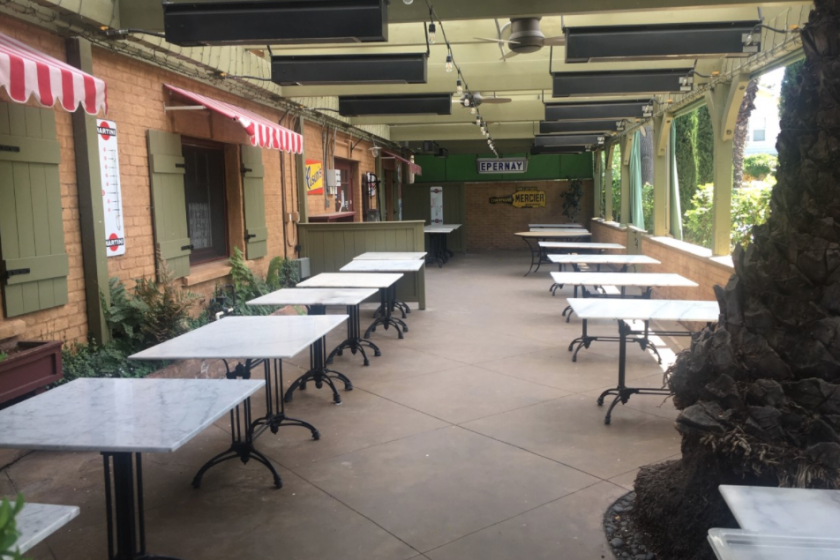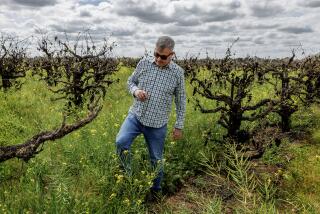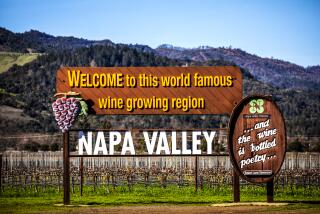Some social distancing with your Chardonnay? Wineries are reopening across California
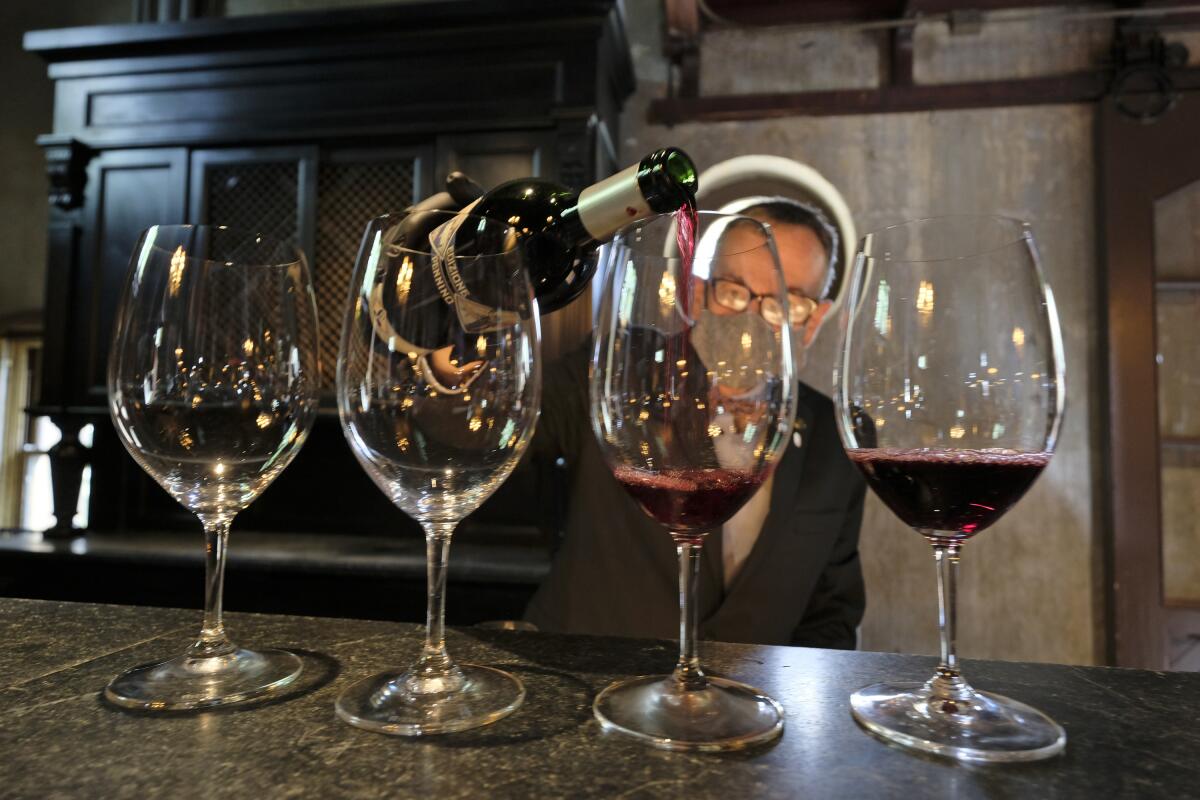
- Share via
SONOMA, Calif. — Though it might seem incongruous to scout out chardonnay during social upheaval and a pandemic, wineries are reopening across California, and their owners and analysts appear cautiously optimistic about future sales and atmospherics.
For now.
On opening day at Sonoma’s Buena Vista Winery, a couple biked to the historic vineyard’s gates and was greeted with a wave by the winery’s owner, Jean Charles Boisset, and a man dressed as “Count” Agoston Haraszthy, the 19th century Hungarian founder of the winery.
Waiters and hospitality workers buzzed in and out of the Press House, the winery’s 1862 landmark bar and restaurant. They were masked and maintained a safe distance from one another and their restless, anxiously excited guests, who’ve been cooped up at home for weeks as a result of the state’s shelter-in-place orders.
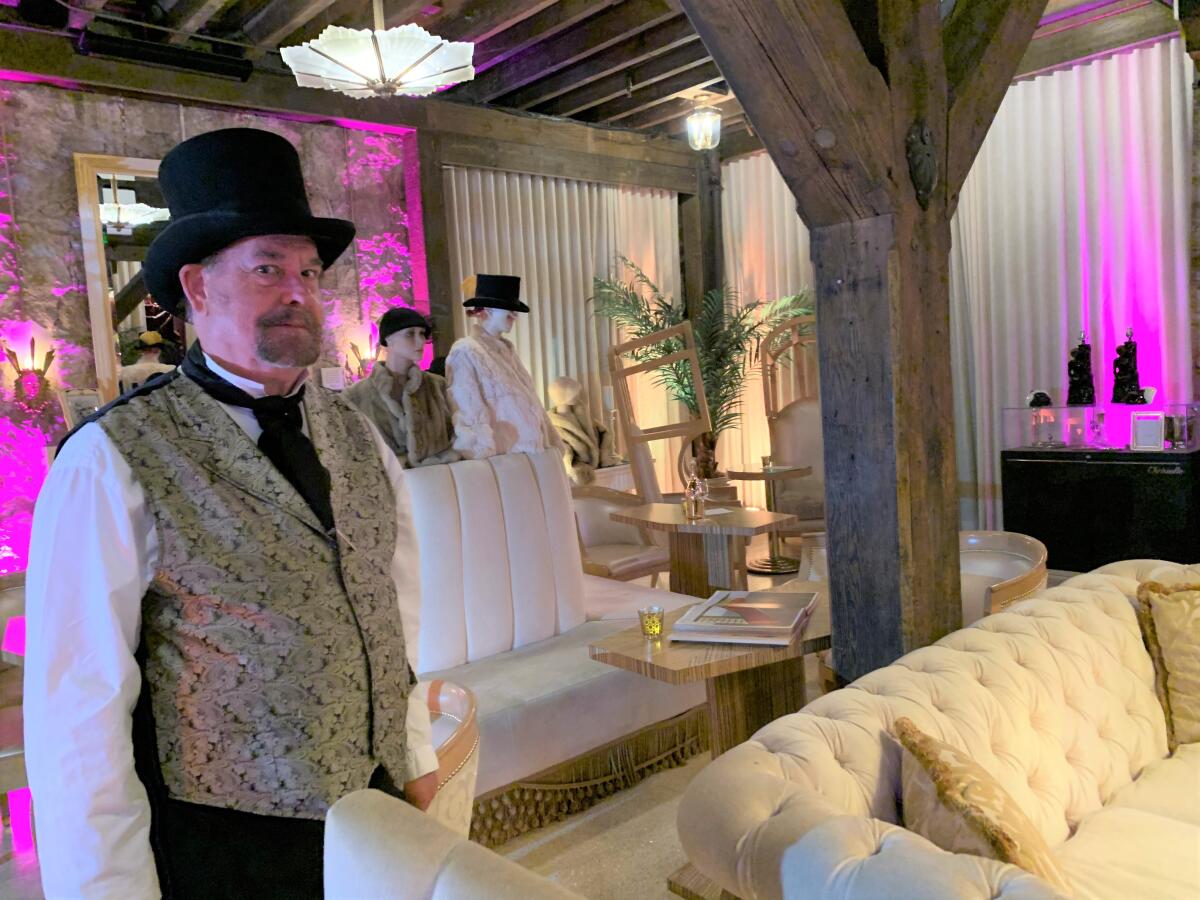
But it’s a slightly different winery than it was before the pandemic.
Communal spit buckets are now prohibited, as are crowded queues around wine-tasting bars. Instead, guests must make time-restrictive reservations, and wineries must ensure no overlap.
Servers are required to wear masks and gloves, and have minimal contact with guests.
“That’s really for everybody’s safety,” said Rene Byck, co-owner of Paradise Ridge Winery in Santa Rosa, Calif.
Explaining the new protocol, he said waiters will serve guests at the beginning of a sit-down meal and tasting and provide them with an iPad that presents information about the wines they are trying. The hope is to have contact between servers and guests only at the beginning and endof each reservation.
“In some ways, it’s nice,” said Byck of the virtual tutorial provided to guests. “People can move through it at their own pace. And rewind, if they want.”
At Buena Vista, charcuterie plates, salads and other gourmet foods are served in individual plastic boxes along with separate glasses of wine for each variety served.
And toasting — for any occasion — is strictly discouraged among non-household members.
Defying shelter-in-place orders over coronavirus, some Napa Valley businesses have reopened.
That didn’t stop Boisset and the Count from giving an “air” toast with a visitor to the successful reopening of the winery.
Though the number of visitors is down from the same time last year, said Boisset, reservations were filling up and walk-ins, like the bicycling couple, were appearing — hoping to relax at a table atop the cobblestone courtyard of the 19th century winery.
And that’s something to raise your glass to, said Rob McMillan, executive vice president and founder of Silicon Valley Bank’s wine division. He said the typical small to medium-size California winery has taken a 43% revenue hit since the start of the pandemic — the result of combined losses in tasting room and restaurant sales.
Early indications suggest people are busting to return, he said, and although point-of-sale revenues plummeted, online sales skyrocketed — jumping from 5.3% of total sales from Jan. 1 to March 13, to 19.2% from March 20 to May 8.
It’s a sign that winery owners are finally heeding McMillan’s decades-old advice to move more sales and experiences, such as virtual tastings, to the internet and pay attention to consumer data.
“It sometimes takes something like a pandemic to unlock your mind,” he said, and to spur people to “try new ways to do things.”
For an industry that built itself on location-based experiences — vineyard tours and on-grounds tastings — the new model requires a “massive shift” in both self-perception and organizational effort, McMillan said.
According to his data, less than 20% of wineries have a full-time employee dedicated to analyzing consumer data.
And that, he said, is where winery owners need to be looking: Who is buying their wine? What are their interests? How can you tap into that to get them excited to buy more wine?
“Don’t advertise wine cruises if your clientele doesn’t like cruises,” McMillan said. “If the data shows your customers like tennis, consider tennis outings as a way to reach them.”
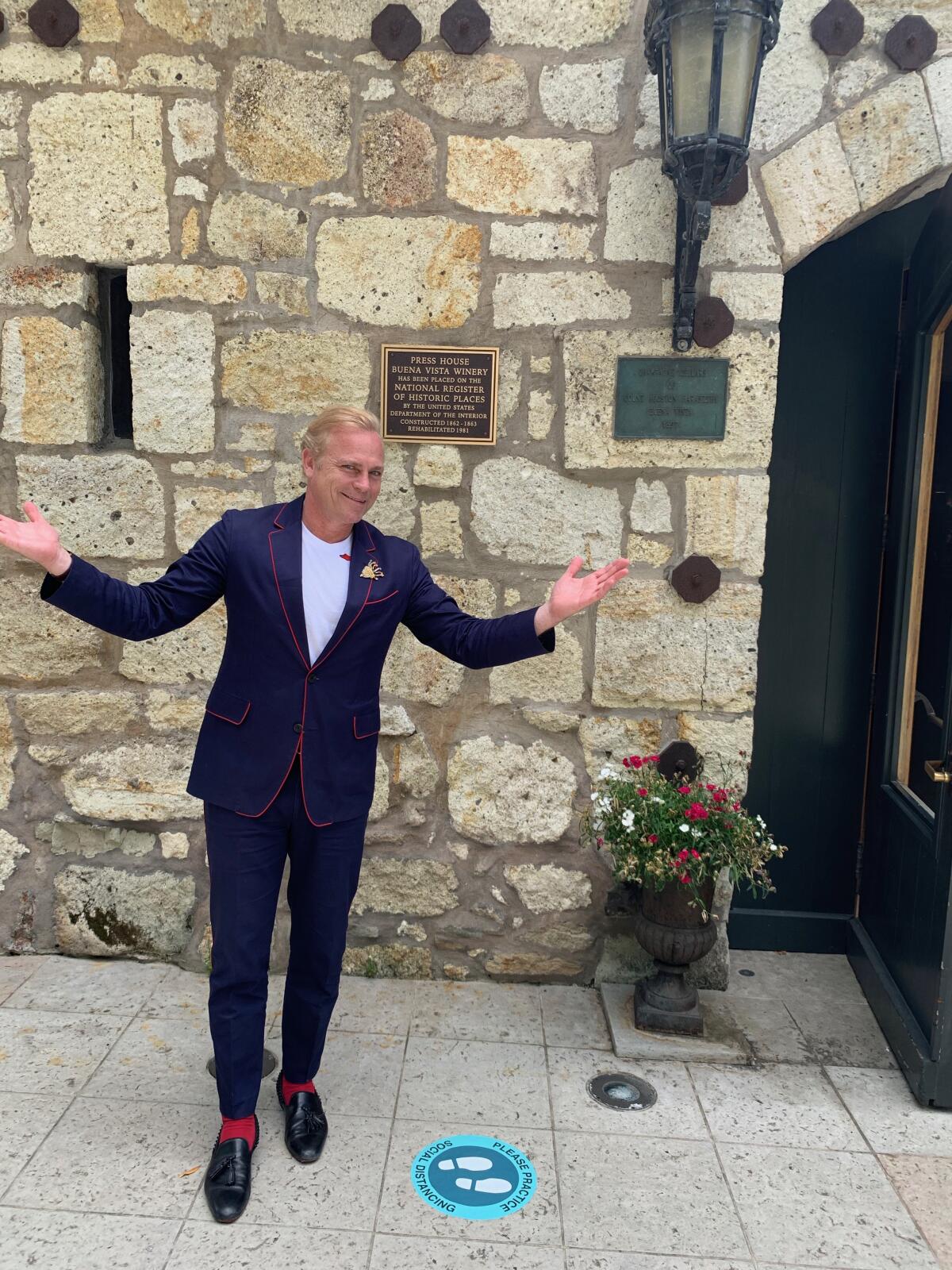
As guests filtered into Buena Vista, Boisset — who was dressed in a royal blue suit with bright red socks and a matching monogrammed face mask — discussed the ways his company pivoted during the crisis.
For instance, he holds a virtual happy hour with the public every Saturday on Facebook, as well as more exclusive experiences for wine club members, such as private cooking lessons with him and a celebrity chef.
McMillan said that since March 20, wine club memberships grew for most wineries from roughly half of their revenue stream to slightly more than 60%.
He noted that Boisset, who owns dozens of wineries and specialty food shops throughout California and his native France, was ahead of the curve on online experience.
“The guy is as sharp as a fox,” McMillan said. “He’s willing to try different things.”
Including virtual history lessons with the Hungarian Count — reenacted by Sonoma actor and historian George Webber.
Standing in a top hat, satin vest and 19th century attire, Webber — who was channeling the Count — noted that Buena Vista, which touts itself as California’s “first premium winery,” has faced its share of catastrophes over the 163 years it has been around. So have other historic California wineries.
“You forget the cholera epidemic of the 1850s, which killed thousands,” he said, invoking the Count’s persona, minus the Hungarian accent. He then ticked off a list of other events, such as the 1918 flu pandemic, the 1906 San Francisco earthquake, Prohibition and the 1989 Loma Prieta earthquake — all of which occurred after his death — noting that “after every event, we came back even stronger.”
Byck, the co-owner of Paradise Ridge Winery, shares that sentiment.
“It’s not the first time we’ve had to think about how to adapt,” he said.
In October 2017, the Tubbs fire burned Paradise Ridge to the ground. Not long after, the business faced floods.
After two years, the winery finally reopened its pavilion in December 2019, only to be closed again because of the pandemic.
Byck said he’s hopeful his online sales and virtual experiences will make up for the loss in in-person revenue and tours.
He said that like Boisset’s Buena Vista, his winery has been focusing more on both virtual and off-location events. Before the pandemic, he and his team were regularly flying across the country to bring tasting-room experiences to the homes of out-of-state wine club members.
Napa Valley restaurants reopen, but customers are few. ‘It will be a slow return.’
In addition, the winery’s new events venue has ample patio and outdoor space, providing room for dining and tasting experiences — as long as guests bring masks and keep socially distanced from one another while on the premises.
For the wineries that do have outdoor space, things will be easier.
On a recent Friday, Katie Bundschu, of Gundlach Bundschu Winery in Sonoma, greeted guests who’d reserved 90-minute slots for tastings on her breathtaking 120-acre property.
A DJ mixed tunes at the winery’s entrance while staff roamed the property, directing guests to the outdoor tasting and dining stations.
Bundschu said 45 reservations had been made for opening day, and roughly 200 each day for both Saturday and Sunday — a dip from typical weekend numbers, which generally hover around 600.
“It’s about time,” said Troy Tanga, a Gundlach Bundschu wine club member and Sonoma resident, who was relishing the experience — delighted to be back at the winery with a small group of friends. “We’re all ready to get back to business.”
More to Read
Sign up for Essential California
The most important California stories and recommendations in your inbox every morning.
You may occasionally receive promotional content from the Los Angeles Times.
